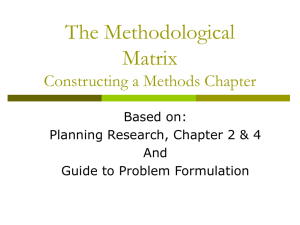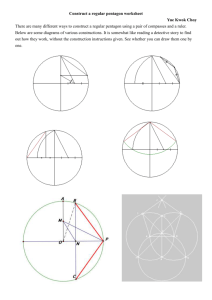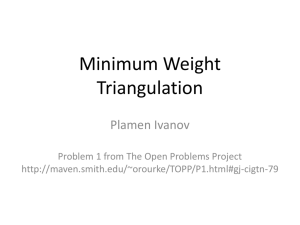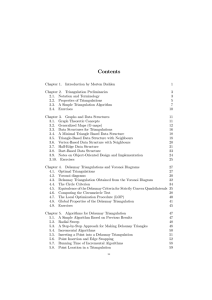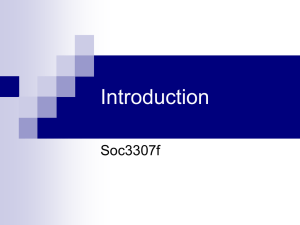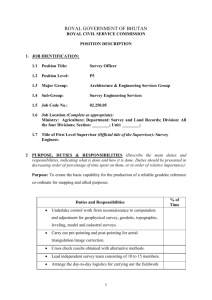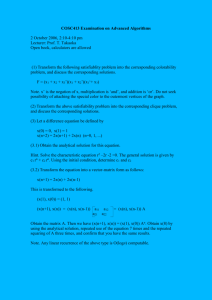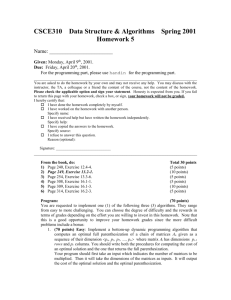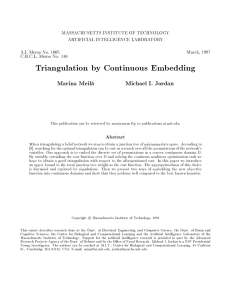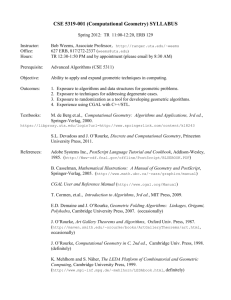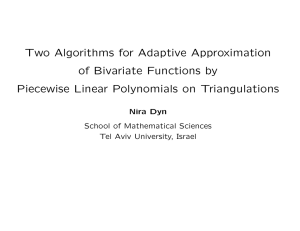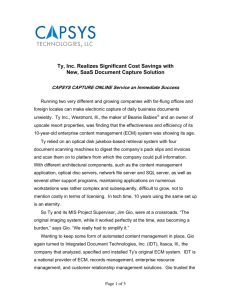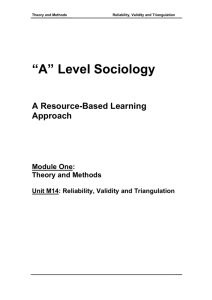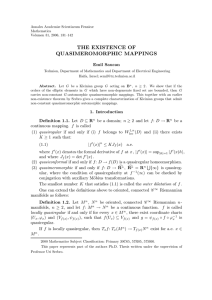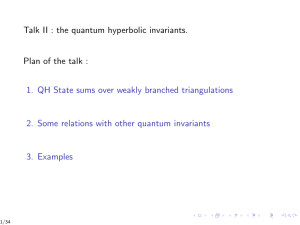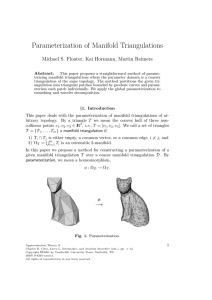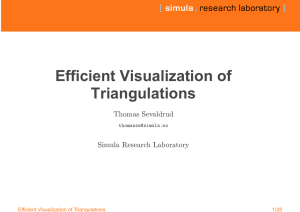COSC413 Examination on Advanced Algorithms
advertisement
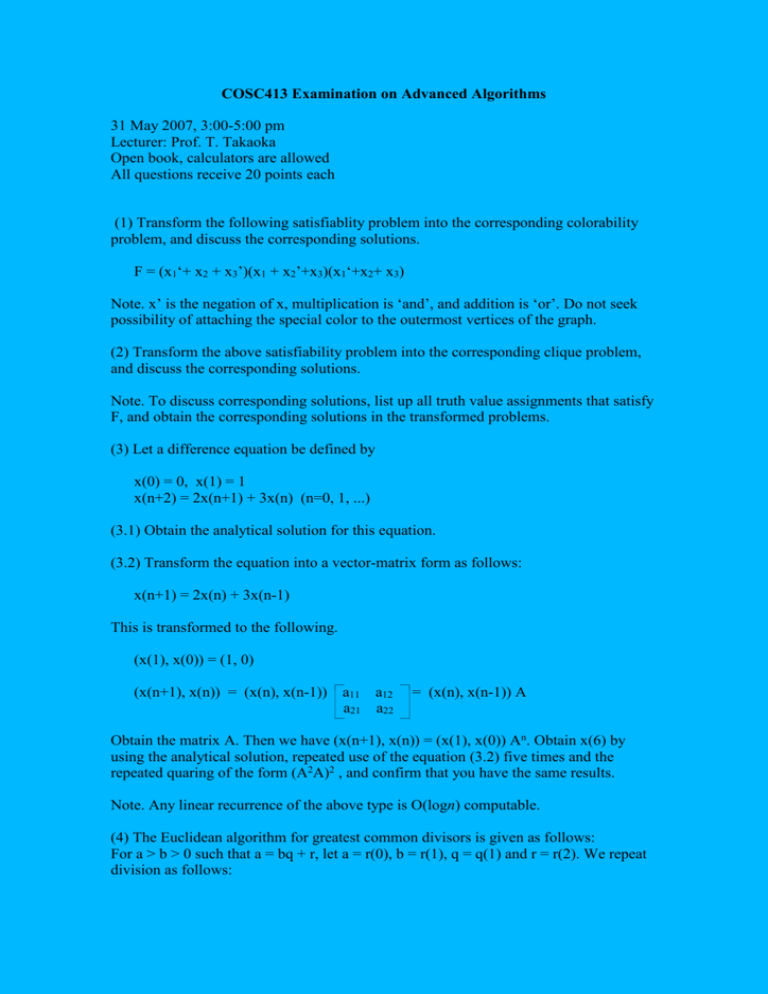
COSC413 Examination on Advanced Algorithms
31 May 2007, 3:00-5:00 pm
Lecturer: Prof. T. Takaoka
Open book, calculators are allowed
All questions receive 20 points each
(1) Transform the following satisfiablity problem into the corresponding colorability
problem, and discuss the corresponding solutions.
F = (x1‘+ x2 + x3’)(x1 + x2’+x3)(x1‘+x2+ x3)
Note. x’ is the negation of x, multiplication is ‘and’, and addition is ‘or’. Do not seek
possibility of attaching the special color to the outermost vertices of the graph.
(2) Transform the above satisfiability problem into the corresponding clique problem,
and discuss the corresponding solutions.
Note. To discuss corresponding solutions, list up all truth value assignments that satisfy
F, and obtain the corresponding solutions in the transformed problems.
(3) Let a difference equation be defined by
x(0) = 0, x(1) = 1
x(n+2) = 2x(n+1) + 3x(n) (n=0, 1, ...)
(3.1) Obtain the analytical solution for this equation.
(3.2) Transform the equation into a vector-matrix form as follows:
x(n+1) = 2x(n) + 3x(n-1)
This is transformed to the following.
(x(1), x(0)) = (1, 0)
(x(n+1), x(n)) = (x(n), x(n-1)) a11 a12
a21 a22
= (x(n), x(n-1)) A
Obtain the matrix A. Then we have (x(n+1), x(n)) = (x(1), x(0)) An. Obtain x(6) by
using the analytical solution, repeated use of the equation (3.2) five times and the
repeated quaring of the form (A2A)2 , and confirm that you have the same results.
Note. Any linear recurrence of the above type is O(logn) computable.
(4) The Euclidean algorithm for greatest common divisors is given as follows:
For a > b > 0 such that a = bq + r, let a = r(0), b = r(1), q = q(1) and r = r(2). We repeat
division as follows:
a = b*q(1) + r(2),
0 <= r(2) < b
b = r(2)q(2) + r(3),
0 <= r(3) < r(2)
...
r(i-1) = r(i)q(i) + r(i+1), 0 <= r(i+1) < r(i)
...
r(n-1) = r(n)q(n) + r(n+1), r(n+1) = 0
gcd(a, b) = r(n)
(4.1) Trace this algorithm with a = 112 and b = 63.
(4.2) Define sequences c and d by
c(0) = 0, c(1) = 1, c(i) = c(i-2) - q(i-1)c(i-1)
d(0) = 1, d(1) = 0, d(i) = d(i-2) - q(i-1)d(i-1).
Then we have a*d(i) + b*c(i) = r(i) for i=0, ..., n. By tracing sequences c and d,
compute 9-1 mod 16 in the range of {1, ..., 15} and 16-1 mod 9 in the range of {1, ..., 8}.
(4.3) Prove that (m-1)-1 = m-1 in Zm* for any m>1. Confirm this with 15-1 mod 16.
(5) A triangulation of a convex polygon is to divide it into triangles. All triangulations
of a pentagon is listed below.
1
5
2
3
4
There are N=C(2n, n)/(n+1) such triangulations for a (n+2)-polygon, where C(n, k) is
the binomial coefficient of k out of n, that is, C(n, k)=n!/(n!(n-k)!). For a pentagon,
n=3, and N=6!/(3!3!)=5. N is called the Catalan number.
Let us give a cost c[i][j] to each edge (i, j) for i<j. The cost of a triangulation is to
minimize the total cost of edges used in the triangulation. The optimal triangulation is a
triangulation with the minimum cost. We solve this problem by dynamic programming.
Now let us give costs c for the above pentagon, and working for the optimal
solution f is given as follows:
c
1 2 3 4 5
f 1 2 3 4 5
-----------------------------------------------------1 | 0 1 4 6 1
1 | 0 1 6 13 13 f[1][5] =min{f[1][2]+f[2][5]
2 |
0 1 3 5
2 |
0 1 7 11
f[1][3]+f[3][5]
3 |
0 1 7
3 |
0 1 9
f[1][4]+f[4][5]}
4 |
0 1
4 |
0 1
+1
5 |
0
5 |
0
min{12, 15, 14}+1
--------------------------------------------------------Let f[i][j] be the optimal solution for the sub-polygon made by vertices (i, i+1, …, j).
We obtain f[i][j] from small value (=2) of j-i until we reach f[1][n] by the following
recurrence formula. Let f[i][i]=0 for all i.
f[i][j]=
min {f[i][k]+f[k][j] + c[i][j]} for all i < j
i<k<j
(5.1) List up all triangulations for a hexagon (there are six vertices), and confirm the
number by the Catalan number.
The solution for the pentagon and the general situation is depicted below.
1
1
4
1
1
6
5
5
3
3
1
7
1
1
1
Optimal solution
Initial data
1
n
j
i
i+1
k+1
k
We assume the optimal solutions for (i, i+1, …, k) and (k, k+1, …, j) are known
for all k (i<k<j). Then we check all such k between i and j for the optimal
solution for polygon (i, i+1, …, j).
(5.2) Trace the algorithm for a hexagon whose costs are given by
c
1 2 3 4 5 6
-------------------------------1 | 0 1 4 6 7 1
2 |
0 1 3 5 4
3 |
0 1 7 2
4 |
0 1 3
5 |
0 1
6 |
0
--------------------------------Show the optimal triangulation in picture.
(5.3) Compare this solution with the exhaustive method by all triangulations, and
discuss which is more efficient.
Note. Approximate value of n! is given by Stirling’s formula n! = nne-n/(2πn)1/2
